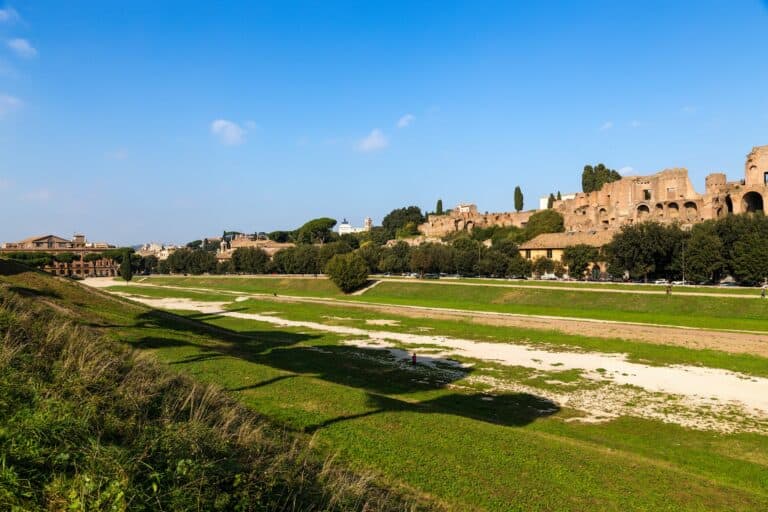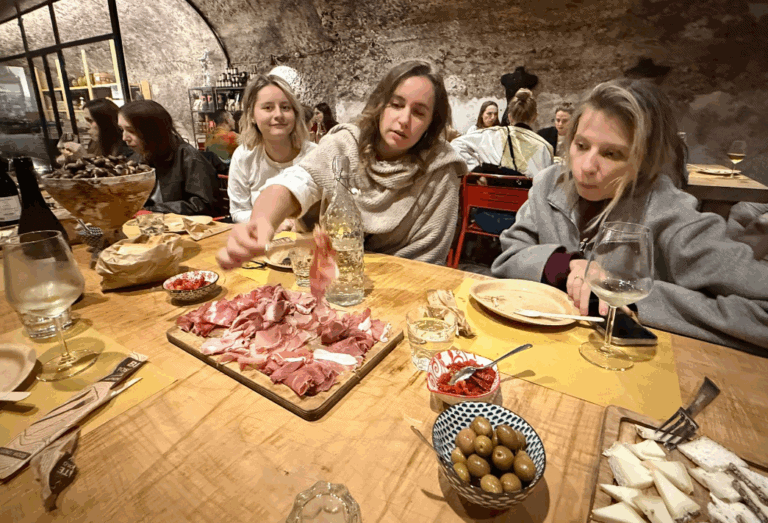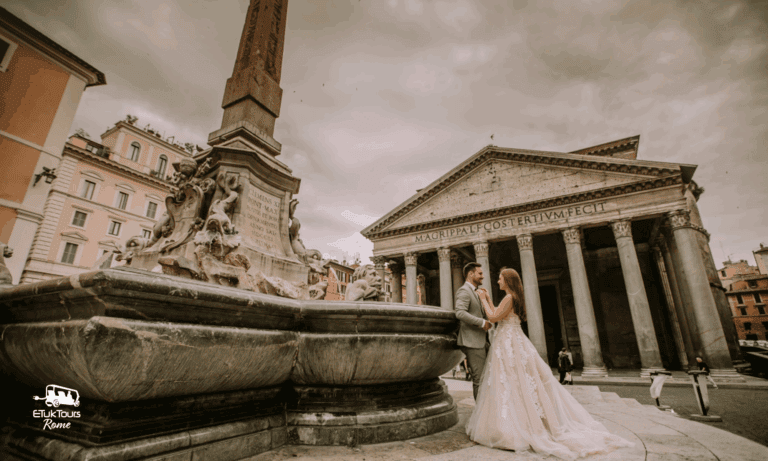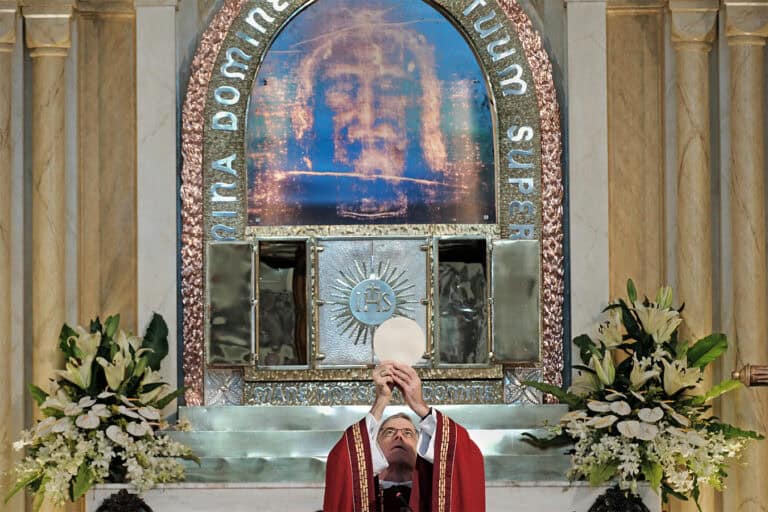As anticipation builds for Jubilee 2025, Rome prepares to welcome pilgrims and tourists from around the globe, drawn by a sense of spiritual renewal. This significant event, rooted in Catholic tradition, invites visitors to explore the sacred sites that have stood for centuries, steeped in history and faith. Experience the profound atmosphere of Rome, where the vibrant culture intertwines seamlessly with the divine.
Central to this journey are the iconic churches that characterize the Eternal City, each offering a glimpse into the depths of religious heritage. From the majestic St. Peter’s Basilica to the lesser-known hidden gems, each location carries its own story and significance, reflecting the diverse tapestry of faith within Rome. These churches not only provide a place for worship but also serve as architectural masterpieces that elevate the spirit.
In this article, we embark on a tour of must-see churches in the heart of Rome, highlighting their unique features and rich histories. Additionally, we’ll provide essential tips for navigating the city during this momentous occasion, ensuring your pilgrimage is both meaningful and accessible. Join us as we explore the sacred treasures awaiting discovery in the holy city.
St. Peter’s Basilica: The Heart of Catholicism
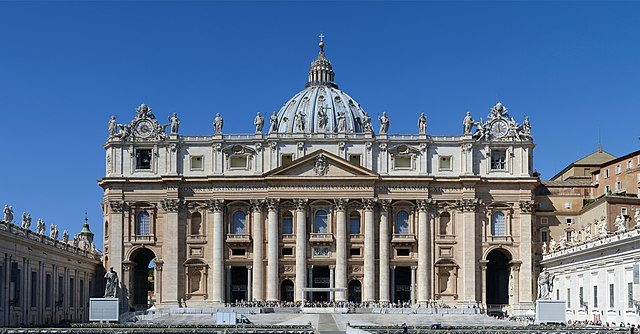
St. Peter’s Basilica, located in Vatican City, is one of the most iconic and significant churches in the Catholic world. It is believed to be the burial site of St. Peter, one of Jesus Christ’s apostles and the first Pope, making it a central pilgrimage site. The basilica stands as a monumental symbol of Renaissance architecture, designed by prominent figures like Michelangelo, Bernini, and Bramante.
The interior of St. Peter’s Basilica is truly breathtaking, with its vast nave, adorned chapels, and impressive dome. Michelangelo’s Pietà and Bernini’s Baldachin are must-see masterpieces within its walls. The dome, a stunning architectural feat, offers panoramic views of Rome, accessible via an ascent of steps or elevator.
Visiting St. Peter’s Basilica during the Jubilee in 2025 provides a unique opportunity to experience the basilica’s spiritual and historical significance. Whether you’re drawn by faith, art, or history, this landmark is a must-visit for those exploring the rich tapestry of Rome’s religious heritage.
Papal Basilica of Saint Mary Major: A Glimpse of the Divine
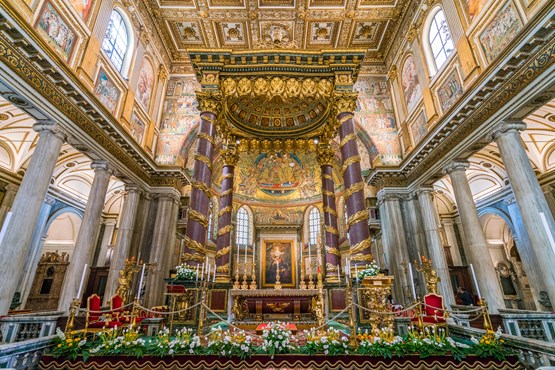
The Papal Basilica of Saint Mary Major is a key spiritual site in Rome, offering a blend of historical significance and architectural beauty. As one of the four major papal basilicas, it attracts numerous visitors, especially during jubilee years. The basilica stands out with its remarkable mosaics from the 5th century, which are considered some of the oldest in the Christian world.
Inside, the basilica houses the Bethlehem Crypt, which is believed to contain a relic of the Holy Crib. Its opulent interior features works by famed artists, contributing to its grandeur. The coffered ceiling, crafted with gold brought from the New World, adds a unique splendor. This sacred space, completed in 440 AD, has been a focal point for devotion and pilgrimage for centuries.
Visiting Saint Mary Major offers a glimpse into a deep-rooted spiritual history, making it indispensable for anyone exploring Rome‘s religious heritage during the Jubilee 2025. With its rich history and profound spiritual ambiance, it remains a significant testament to Rome’s enduring Christian legacy.
Papal Basilica of Saint John Lateran: The Cathedral of Rome
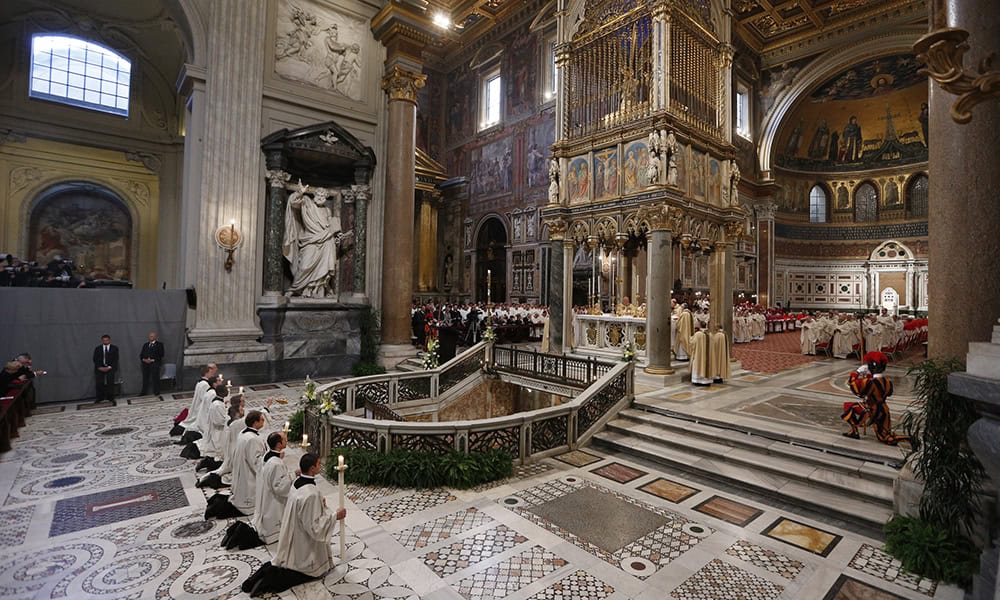
The Papal Basilica of Saint John Lateran, known as the Cathedral of Rome, holds the title of the oldest and highest-ranking of the four major basilicas. Founded in the 4th century, it serves as the ecclesiastical seat of the Pope. Its architecture showcases a blend of history and artistry, featuring stunning frescoes, sculptures, and a dominating façade.
Visitors can explore the basilica’s notable interior, including its majestic nave lined with statues of the apostles. The Holy Door, opened during Jubilee years, is a significant spiritual entry point. Additionally, the Lateran Baptistery, the oldest of its kind, is located nearby and offers a glimpse into early Christian architecture. The basilica is not just a place of worship, but a testament to Rome’s rich religious legacy.
Basilica di Santa Maria in Vallicella: A Baroque Masterpiece
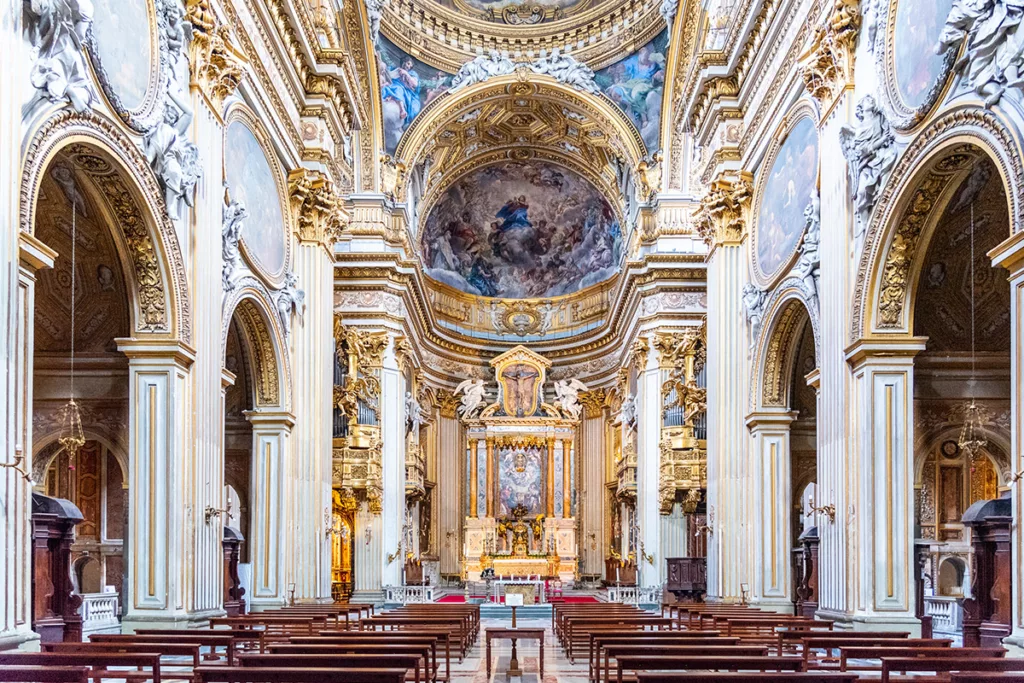
The Basilica di Santa Maria in Vallicella, also known as Chiesa Nuova, is a prime example of Baroque architecture in Rome. Located in the heart of the city, this church is renowned for its stunning interior and significant historic value. Its construction was completed in the late 16th century under the guidance of Saint Philip Neri.
The basilica’s grand façade and intricate decorations captivate visitors, making it a must-see for those interested in art and history. The interior boasts beautiful frescoes by Pietro da Cortona and notable altarpieces. One of its key features is the high altar, which houses a miraculous image of the Virgin Mary. This makes it a significant site of devotion for visitors and locals alike.
Santa Maria in Vallicella also features several chapels, each adorned with impressive works of art. The church’s atmosphere encourages reflection and appreciation of its artistic and religious significance. Whether you’re a devout follower or an art enthusiast, the Basilica di Santa Maria in Vallicella offers a memorable glimpse into Rome’s rich cultural heritage.
San Paolo alla Regola: A Hidden Gem
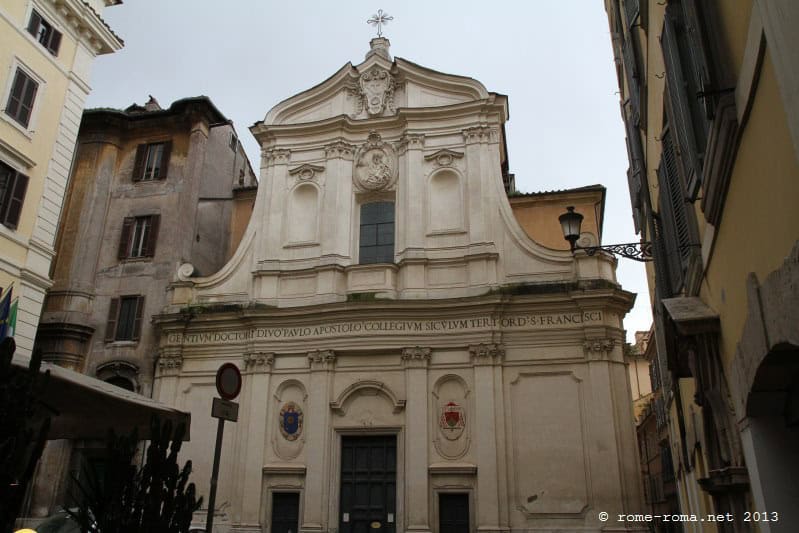
San Paolo alla Regola is one of Rome’s lesser-known churches, often overshadowed by more famous basilicas. Located in the heart of the city’s historic center, this church offers visitors a chance to explore a more intimate side of Roman religious art and architecture. Its origins date back to early Christian times, and it is believed to be one of the places where Saint Paul lived and taught during his time in Rome.
The church’s modest exterior hides a rich interior filled with beautiful artwork and intricate frescoes. Visitors can admire the stunning altarpiece and the carefully restored paintings that adorn its walls. While it may not draw the same crowds as St. Peter’s Basilica, its quiet atmosphere allows for personal reflection and a closer connection with Rome’s religious history.
For those exploring Rome during the Jubilee 2025, San Paolo alla Regola provides a perfect respite from the bustling tourist spots. Its historical significance and peaceful ambiance make it a worthwhile visit, revealing the hidden layers of Rome’s spiritual and cultural heritage.
Church of Santa Prisca: History on Aventine Hill
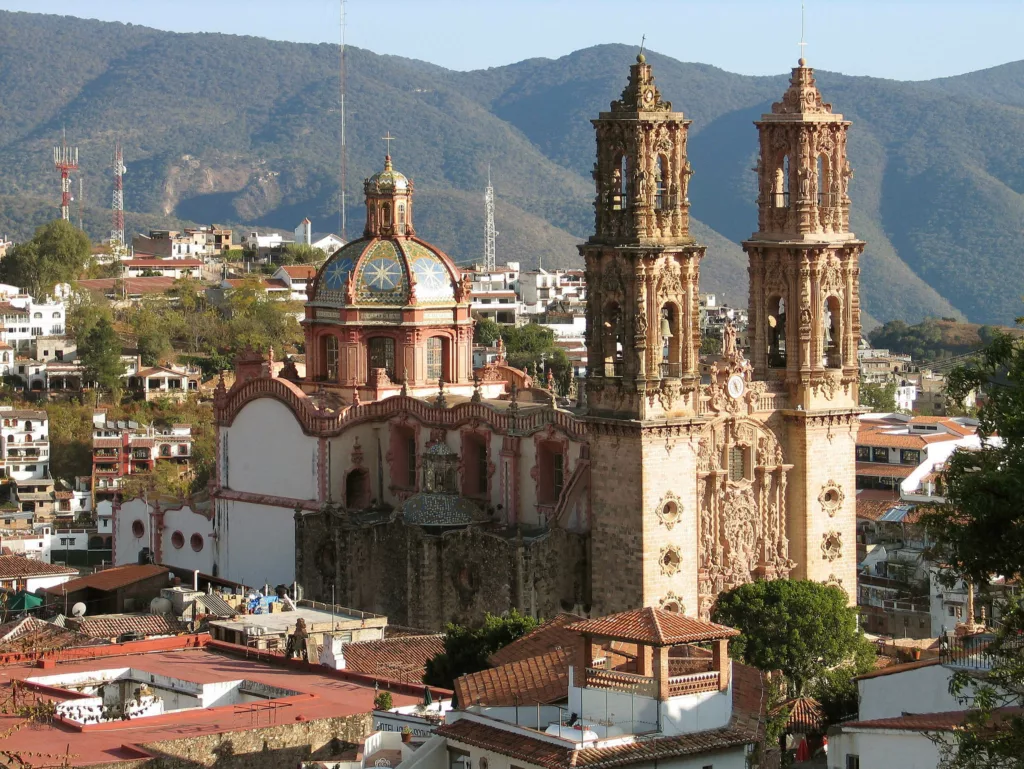
The Church of Santa Prisca, located on Rome’s Aventine Hill, holds a rich historical significance. Built over the remains of a Roman temple dedicated to Mithras, it is a testament to the city’s ancient religious transformations. The current structure dates back to the 4th century, though it has seen several restorations, particularly during the Renaissance.
This church is dedicated to Saint Prisca, a young martyr who is believed to have suffered for her Christian faith under Emperor Claudius. The interior houses several notable artworks, including frescoes that illustrate Prisca’s life and martyrdom. Visitors are often drawn to its serene atmosphere and the intriguing blend of ancient and Christian elements present within its walls.
Santa Prisca is an architectural gem with a simple façade that belies its historical depth. The church’s location offers a peaceful retreat from the bustling city, providing a perfect vantage point to appreciate Rome’s layered history. Whether you’re interested in its religious significance or its architectural evolution, Santa Prisca is a compelling stop on any itinerary exploring Rome’s historic churches.
Basilica of Santa Sabina: Peace and Reflection
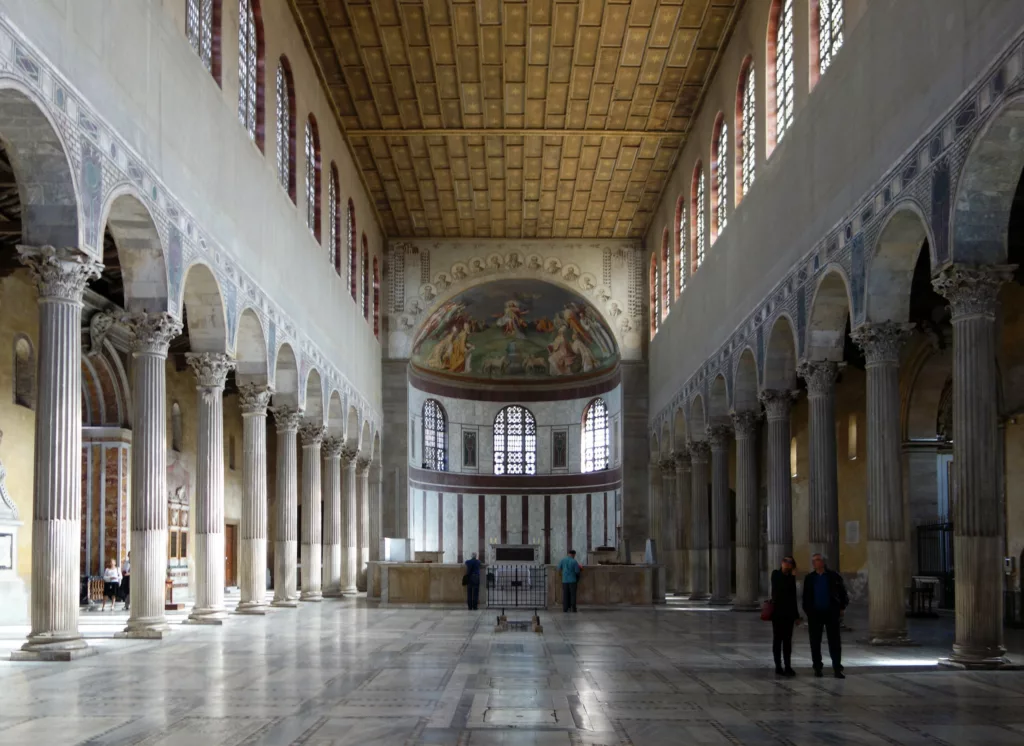
The Basilica of Santa Sabina, located on the Aventine Hill, is a standout destination for those seeking peace and reflection during the Jubilee 2025 in Rome. This 5th-century basilica is known for its simplicity and architectural beauty, offering visitors a serene atmosphere away from the city’s bustling tourism spots. Its unadorned façade and wooden doors, which date back to 432 AD, feature carvings depicting biblical scenes, making it a remarkable historical site.
Inside, the basilica’s spacious nave and austere marble columns create an environment conducive to contemplation and prayer. The natural light filtering through the large windows adds to the tranquil ambiance. A visit here provides not only a spiritual experience but also a glimpse into early Christian architecture. This combination makes Santa Sabina an ideal location for those looking to deepen their faith or simply enjoy a moment of peace during the Jubilee celebrations. Whether you are religious or simply appreciate historical architecture, Santa Sabina offers a unique opportunity to pause and reflect in the heart of Rome.
Church of San Clemente: Layers of History
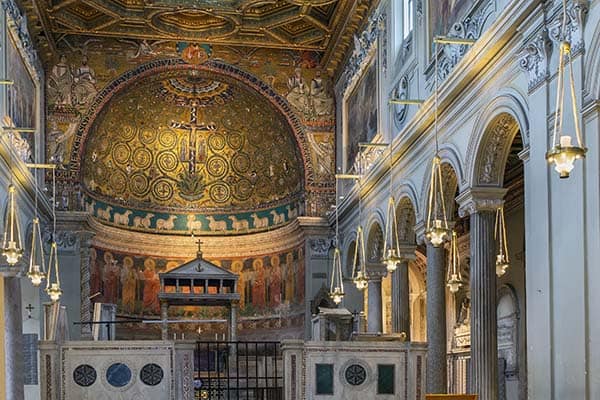
The Church of San Clemente in Rome is an architectural marvel that reveals layers of history, dating back to the first century. This unique church is built on three different levels, each illustrating a distinct period in Roman history. The top level is a 12th-century basilica adorned with beautiful mosaics and frescoes, making it a remarkable example of medieval art.
Below the basilica, visitors can explore a fourth-century church that once served as a place of worship until it was largely buried over time. This level provides insights into early Christian traditions and reflects the church’s evolution over the centuries. The lowest level takes visitors even further back to the first century, showcasing a Mithraic temple and various Roman constructions. These include remnants of a nobleman’s house and ancient Roman street, offering a glimpse into the city’s pagan past.
San Clemente stands as a testament to Rome’s ability to build upon its rich heritage while preserving each era for future generations. This site is a must-visit during the Jubilee 2025 for anyone interested in the city’s dynamic historical and religious tapestry.
Basilica di Santa Maria in Trastevere: A Celebration of Faith
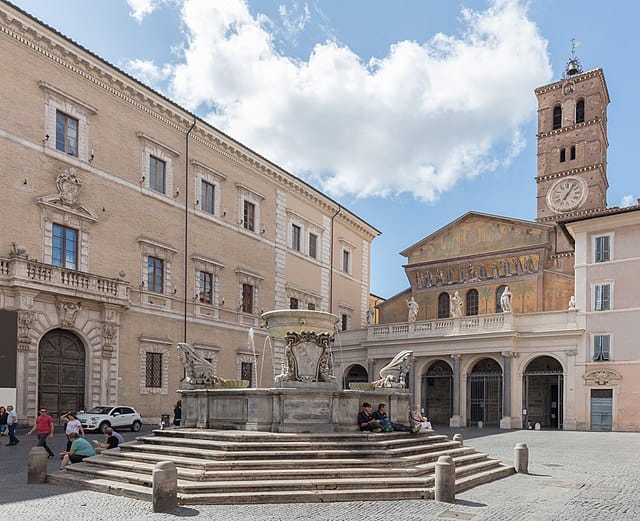
The Basilica di Santa Maria in Trastevere stands out as a prominent site for visitors during Jubilee 2025 in Rome. This ancient church is known for its stunning mosaics, depicting scenes from the life of the Virgin Mary, which are considered some of the finest in the city. Its location in the vibrant Trastevere neighborhood makes it easily accessible for those wanting to explore both the spiritual and cultural heart of Rome.
Built in the 4th century, the basilica is one of the oldest Christian churches in Rome. Its architectural beauty, characterized by a harmonious blend of Romanesque and medieval styles, attracts both faithful pilgrims and history enthusiasts. The church’s serene atmosphere provides a perfect setting for prayer and reflection amidst the Jubilee celebrations.
A visit to the Basilica di Santa Maria in Trastevere allows visitors to experience both spiritual renewal and historical appreciation. For those attending Jubilee 2025, this church offers an enriching addition to their pilgrimage, combining art, history, and faith in one remarkable location.
Exploring the Holy Doors: Meaning and Significance
The Holy Doors hold significant religious importance within the Catholic tradition. These doors, located in major basilicas such as St. Peter’s Basilica in Rome, are ceremonially sealed and only opened during a Jubilee year, which occurs every 25 years. Passing through these doors symbolizes the faithful’s journey towards redemption and renewed faith.
The ritual of opening the Holy Doors marks the commencement of the Jubilee year. During this period, pilgrims visiting Rome have the opportunity to receive indulgences by crossing these thresholds, provided they undertake certain spiritual acts like confession and prayer. This practice emphasizes the themes of penance, reconciliation, and divine grace.
The Holy Doors are specifically prominent in four papal basilicas in Rome. These include St. Peter’s Basilica, St. John Lateran, St. Mary Major, and St. Paul Outside the Walls. Pilgrims visiting these sites during the Jubilee year can witness the religious ceremonies held at these revered locations, experiencing firsthand the deep historical and spiritual heritage tied to this tradition.
Tips for Navigating Rome During Jubilee 2025
Navigating Rome during Jubilee 2025 requires some planning due to the expected influx of pilgrims. To make your visit smoother, consider using public transportation. The city’s extensive bus and metro network can help you avoid traffic congestion and reach various landmarks efficiently. It’s advisable to purchase a transport pass, which offers unlimited rides and can save both time and money.
Early mornings and late afternoons are less crowded, making them ideal times for visiting popular sites or attending events. It’s recommended to download a reliable navigation app to keep updated on transit schedules and road closures. Comfortable walking shoes are essential, as many attractions are accessible by foot.
Be mindful of security checkpoints, especially around religious sites. Arriving ahead of schedule will help you handle potential delays. Carry a water bottle and snacks to stay hydrated and energized throughout the day. Lastly, booking accommodations near transit lines or in central locations can significantly ease your mobility. These tips can help ensure a rewarding experience during your Jubilee pilgrimage.
Cultural Events: Celebrating the Holy Year
The Holy Year, or Jubilee, is a time for spiritual renewal and cultural celebration in Rome. During the Jubilee 2025, several cultural events are planned to enhance the visitor experience. Concerts, art exhibitions, and religious processions will take place across the city, offering both locals and pilgrims a chance to engage with Rome’s rich heritage.
One of the highlights includes a series of classical music performances held in historic venues. These performances aim to bring together famous artists and choirs from around the world. Additionally, art exhibitions will showcase religious art and artifacts, providing insights into the history and influence of the Church.
Religious processions are also scheduled during the Jubilee, allowing participants to witness traditional practices. These processions often pass through significant sites, emphasizing the deep connection between Rome’s cultural and religious history. Whether interested in art, music, or tradition, the Holy Year offers diverse events that cater to all interests.
Enhancements in Accessibility: Making Pilgrimage Easier
Enhancements in accessibility are making pilgrimage more feasible and inclusive for individuals with mobility challenges or other disabilities. In recent years, many pilgrimage sites have undertaken initiatives to improve access for all visitors. These improvements include installing ramps, elevators, and accessible pathways, ensuring that everyone can partake in the spiritual journey.
Transportation to and from these sacred destinations has also seen significant upgrades. Public transit systems now often include vehicles equipped to accommodate individuals with mobility aids. Additionally, digital resources such as apps and websites provide real-time accessibility information and services, allowing pilgrims to plan their journeys with greater ease and confidence.
To further support these efforts, some pilgrimage sites offer specialized tours for visitors with disabilities. These tours include expert guides trained to cater to diverse needs, enhancing the overall experience. By prioritizing accessibility, pilgrimage locations are not only expanding their reach but also ensuring a welcoming environment for all.
Conclusion: Preparing for a Transformative Experience
Visiting Rome during the Jubilee 2025 offers a unique opportunity for a transformative experience. The city’s rich tapestry of history, art, and spirituality is embodied in its renowned churches, each providing insights into centuries-old traditions and architectural grandeur. This pilgrimage can deepen one’s appreciation for cultural heritage and personal reflection.
To prepare for this journey, it’s essential to plan your visits to major basilicas like St. Peter’s Basilica, St. John Lateran, and the Pantheon, among others. Understanding the significance of each site can enhance your experience, allowing you to engage more deeply with the stories and spirituality they represent. Consider setting aside time for quiet contemplation and attending special Jubilee events to fully immerse yourself in the atmosphere.
In summary, the Jubilee 2025 in Rome offers more than just sightseeing; it’s an opportunity for personal growth and spiritual enrichment. Proper preparation can ensure that your visit is meaningful and memorable, providing a lasting impact long after you leave the Eternal City.

